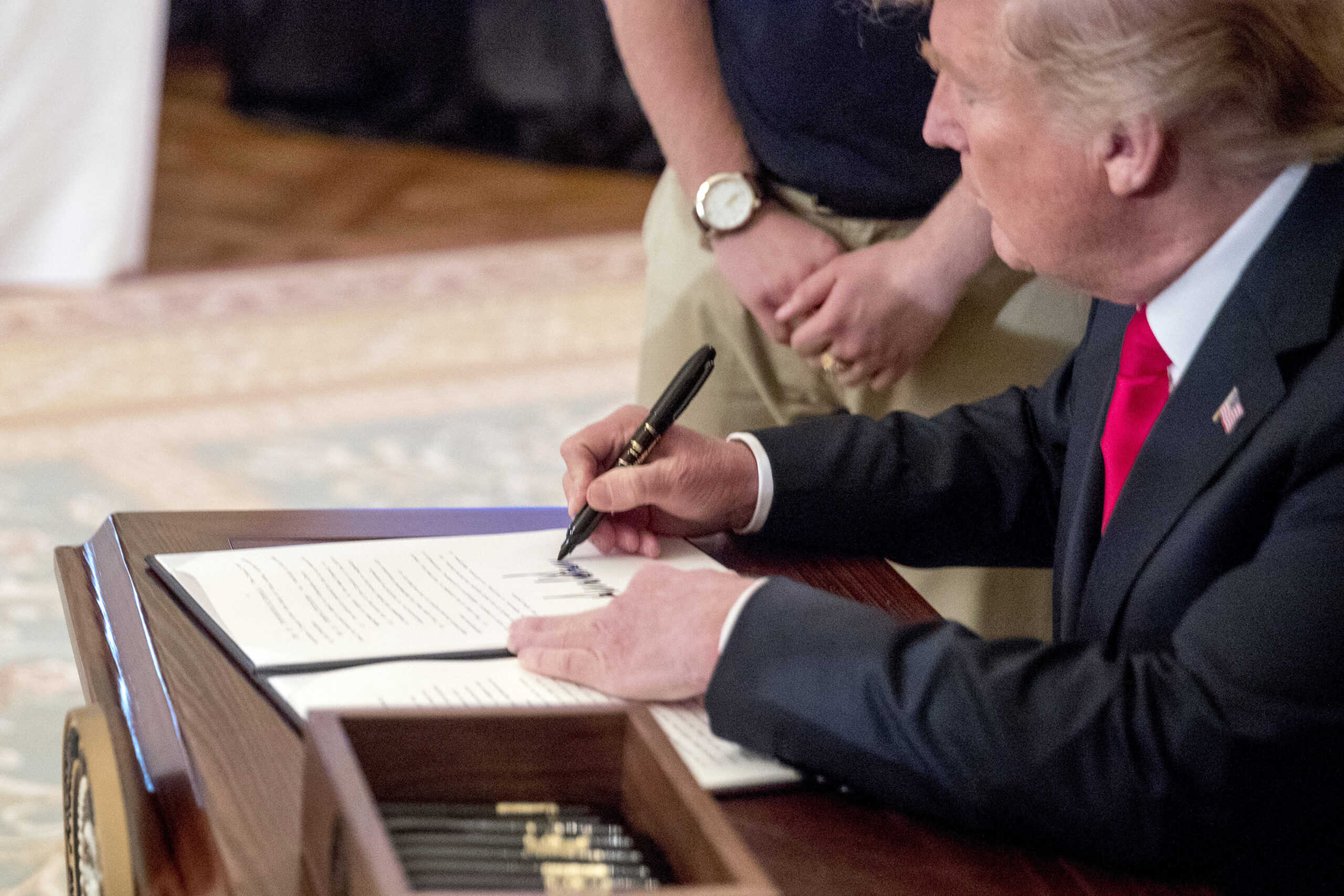
Higher input costs and reduced demand due to President Trump’s tariff policy raise red flags under U.S. GAAP and IFRS for impairment testing of non-financial assets such as property, plant, and equipment (PP&E), intangible assets, and goodwill. The increased economic uncertainty and geopolitical volatility mean projections used to determine “Value in Use” or “Fair Value” may fall below carrying amounts, signaling possible impairments. How are Audit Committees anticipating impairment risks from the material change in U.S. trade policy?
Key takeaways:
- With the uncertain macroeconomic landscape and U.S. trade policy volatility, U.S. multinationals face a greater risk of fixed asset impairments in 2025
- As impairments directly impact earnings, audit committees will have to closely manage the financial, operational, legal, and reputational risks associated with impairments
- Audit committees will have to increase frequency of impairment exposure evaluations, conduct regular benchmarking exercises, improve transparency and investor engagement, revise capex strategy, and enhance training to directors on tariffs and trade
President Trump’s trade policies have increased the risk of fixed asset impairments across many sectors, especially for industrials, commodity, food, CPG, and logistics businesses. This is especially the case where import costs and demand projections have been sharply affected.
Fixed asset impairment happens when the carrying value (book value) of an asset on a company’s balance sheet is greater than its recoverable amount. This signals a decrease in the assets’ value, which needs to be reflected in financial statements.
Audit committees will need to respond by enhancing their oversight through more frequent testing, rigorous assumptions review, and external assurance, to ensure financial statements accurately reflect the evolving risk and asset valuations.
What is at stake for multinationals?
The volatile trade environment poses financial, operational, and reputational risks to multinationals.
- Profitability and equity. Increased tariffs can suppress cash flow forecasts, triggering impairments under GAAP for PP&E, intangibles, and goodwill – leading to direct hits on earnings and equity
- Debt covenant breaches. Asset impairments shrink equity and alter debt-to-asset ratios, potentially violating financial covenants and leading to refinancing or borrowing cost challenges
- Higher credit and capital costs. Repetitive impairments raise credit risk, impacting credit ratings and increasing cost of capital
- Volatility in earnings and financial reporting. Non-cash impairment charges contribute to earnings variability, reducing transparency and predictability for investors
- Disrupted supply chains. Tariffs introduce friction and redesign costs; impaired third-party partners can cascade impairment risk to the parent
- Poor capital allocation. Capital investments may be delayed or canceled as management becomes cautious, while historic assets are written down
- Reshoring costs. Adjusting supply chains creates stranded costs and risks further impairments during transitions
- SEC scrutiny. Inadequate explanation of tariff-driven impairment changes may draw SEC attention or regulatory inquiries
- Potential litigation. Stakeholders could file suits over unexpected impairments tied to management or audit committee oversight failure
- Investor confidence erosion. Unexpected impairment charges tied to trade policy may undermine investor confidence in management’s ability to forecast and manage macroeconomic risks Peer benchmarking pressure. If competitors avoid impairments while a company incurs them, stakeholders may perceive it as less resilient or poorly managed
U.S. multinationals face increased impairment risk
Several U.S. companies have recorded recent impairments (or warned of risk exposure) since the inauguration of President Trump in January.

- DuPont – Warned of $60M net cost from tariffs in its Q1 2025 guidance. It excluded impairment, but flagged exposure in its inventory/costs tied to equipment use
- UPS – Recorded $46.M in asset impairment in Q4 2024, which was attributed partly to cost pressures and tariff exposure
- Teva – Took $517M long-lived asset impairment and $250M in goodwill. Cited broader market pressure including trade uncertainties
- Bristol Myers Squibb – Reported significant intangible impairments (IPR&D/intangibles) due to tariff-driven pricing volatility
- P&G – Recognized $1B in intangible impairments in 2024 due to trade-related cost inflation
- Harley-Davidson – Withdrew earnings guidance entirely due to tariff uncertainty – a reputational red flag
Other sectors face significant exposure, and more impairments are likely for 2025. Large auto manufacturers (Ford, GM) are facing steep steel and aluminum tariffs, which analysts have flagged will likely cause impairments in tooling lines and factories. More specifically, GM has warned of a $4-5 billion revenue impact from tariffs. Industrial firms, like Caterpillar and John Deere, face similar exposure to steel and aluminum cost increases, which may prompt PP&E write–downs. For CPG companies facing higher costs, they may reduce plant usage, which can then lead to impairments. For now, Walmart has noted “no significant impairments” – but as the largest importer, any future impairment will attract high-profile scrutiny.
Actions boards can take:
- Active review of management assumptions. Audit committees should require and review detailed insight into the assumptions used in impairment models – tariff rates, input cost inflation, sales volume, and discount rates
- Frequent trigger testing. Rather than annual tests, committees should require interim impairment assessments whenever tariff developments shift materially
- External valuation expertise. Impairment assessments for fire-sale or goodwill-related declines are increasingly use valuation specialists to support management estimates
- Transparency in disclosures. Audit committees have pushed for expanded disclosure in financial statements — including sensitivity analyses and the impact of tariffs on asset carrying values
- Benchmark industry peers. Assess impairments made by competitors
- Training for directors. Enhance training for corporate directors on trade, tariffs, political risks
Questions for the boardroom:
- Where do we have most impairment exposure in our enterprise due to tariff-related cost pressures or demand shifts?
- Have we conducted a recent impairment analysis based on updated trade scenarios?
- How has our cost of capital changed in light of trade uncertainty, and what does this mean for impairment testing?
- Do our financial forecasts include sensitivity analyses tied to varying tariff levels or retaliatory trade actions?
- Are we applying consistent impairment policies across geographies, especially where tariffs differ?
- Have we clearly explained in our investor communications how tariffs could impact asset values or future profitability?
- Do we have a plan in place to manage reputational risk if we are forced to publicly write down key assets?
- How are we monitoring the financial viability of major suppliers or partners that could trigger cascading impairments on our own assets?
- How are our corporate directors being trained and equipped to manage these risks? Is it sufficient?
Additional Telesto resources:
- Board series: The Kitchen Sink Committee – AI, Cyber, ESG, and, now, tariffs. Are Audit Committees ready
- Board Series: Know Your Supplier – Diversification risks amidst escalating trade wars
- Atlas, equips your organization’s corporate directors and leaders with the insights and knowledge necessary to stay up to date, mitigate risks, and seize business opportunities associated with sustainability, climate, and ESG
- Prism, our ESG benchmarking tool, helps your organization to rapidly strengthen its sustainability, climate, and ESG performance and disclosures through in-depth benchmarking of industry peers and identification of gaps and areas of distinction
- Recently released by Telesto Strategy’s CEO & Founder, Alex Kruzel, The Courage to Continue: Stay the Course on Sustainability to Secure our Future, explores the connection between corporate priorities and President Trump’s national security agenda
If your audit committee’s scope keeps expanding and you’re thinking it might be time for a reset, we’d be happy to share what we’re seeing.




